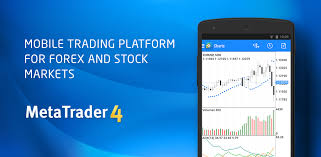Trading has evolved in recent years, with the advent of new technology and the widespread penetration of the internet. In particular, the rise of automated trading, also known as algorithmic trading, has transformed the way many people trade in the financial markets. Automated trading is a powerful tool that allows traders to make money without having to sit in front of a computer screen all day. In this blog post, we will explore how to make money with automated trading on Metatrader 4 platforms.
1. Choose the Right Trading Strategy
In order to make money with automated trading on metatrader 4 platforms, it is essential to choose the right trading strategy. There are many different strategies to choose from, ranging from simple moving average crossovers to complex neural network algorithms. The key is to select a strategy that is reliable and has a proven track record of success. Backtesting is an important tool in selecting a profitable trading strategy. Backtesting enables traders to test their strategies against historical data, allowing them to identify any weaknesses before deploying them in real-time trading.
2. Automation for Unemotional Trading
The main advantage of automated trading is that it removes emotions from the trading process. Automated trading algorithms are designed to follow a predetermined set of rules without deviation. This ensures that trades are placed based on logic, rather than emotional reactions to market fluctuations. Emotions such as fear and greed can lead to irrational decision-making, resulting in missed opportunities or even catastrophic losses. Automated trading eliminates these emotions and enables traders to stick to their predetermined strategy.
3. Minimize Risks with Stop Loss Orders
Trading in financial markets always carries a certain degree of risk. Automated trading strategies aim to minimize these risks by using stop-loss orders. A stop-loss order is an order to sell a security if it reaches a certain price level. This ensures that losses are limited and enables traders to maintain capital for future trading opportunities. Stop-loss orders can also be used to lock in profits, ensuring that traders do not lose out on gains if market conditions suddenly change.
4. Trading Signals
Automated trading strategies rely heavily on trading signals. These signals are generated by technical indicators and other analytical tools, which are used to identify patterns in the market. Trading signals enable traders to enter and exit positions at the right time, maximizing profits and minimizing losses. Many trading platforms, including the Metatrader 4 platform, offer a wide range of technical indicators, making it easy for traders to generate trading signals that match their strategy
5. Monitor and Refine Trading Strategies
Automated trading strategies are not set in stone. They need to be monitored and refined over time to ensure that they remain profitable. Traders should track their trading performance and identify any areas for improvement. This may involve tweaking the parameters of their trading strategy, or changing the strategy altogether. It is important to remember that market conditions are constantly changing, and traders need to adapt their strategies accordingly.
Conclusion:
In conclusion, making money with automated trading on Metatrader 4 platforms is a powerful way to generate consistent profits in the financial markets. It enables traders to remove emotions from the trading process and stick to a predetermined set of rules. By choosing the right trading strategy, using stop-loss orders, and monitoring and refining their strategies over time, traders can maximize their profits and minimize their risks. The key is to remember that automated trading is not a set-it-and-forget-it solution. It requires careful attention and ongoing refinement to ensure that it remains a profitable tool for generating income.



